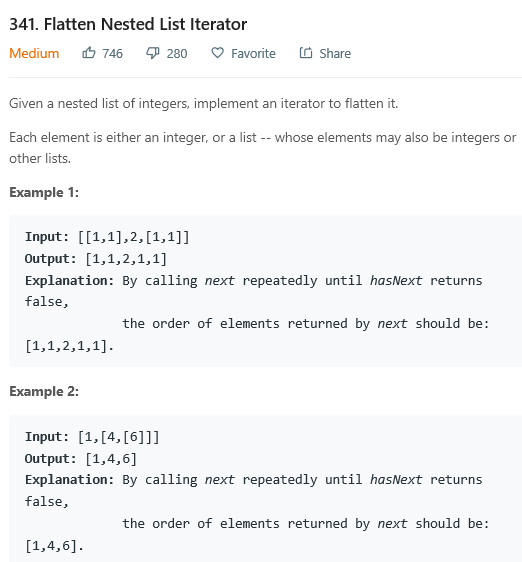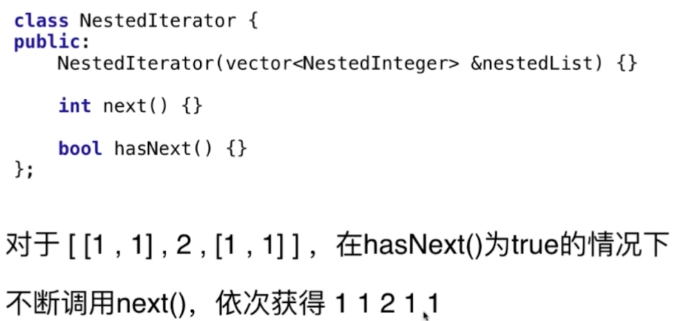栈和递归的关系 144:Binary Tree Preorder Traversal

前序遍历:根左右
//用栈来实现非递归解法
/** * Definition for a binary tree node. * struct TreeNode { * int val; * TreeNode *left; * TreeNode *right; * TreeNode(int x) : val(x), left(NULL), right(NULL) {} * }; */ class Solution { public: vector<int> preorderTraversal(TreeNode* root) { vector<int> res; if(root == NULL) return res; stack<TreeNode*> stack; stack.push(root); while(!stack.empty()){ TreeNode* c = stack.top(); stack.pop(); res.push_back(c->val); if(c->right) stack.push(c->right); if(c->left) stack.push(c->left); } return res; } };
//递归解法,注意res是全局的,要放在遍历函数外面
/** * Definition for a binary tree node. * struct TreeNode { * int val; * TreeNode *left; * TreeNode *right; * TreeNode(int x) : val(x), left(NULL), right(NULL) {} * }; */ class Solution { public: vector<int> res; vector<int> preorderTraversal(TreeNode* root) { if(root){ res.push_back(root->val); preorderTraversal(root->left); preorderTraversal(root->right); } return res; } };
中序遍历:左根右

/** * Definition for a binary tree node. * struct TreeNode { * int val; * TreeNode *left; * TreeNode *right; * TreeNode(int x) : val(x), left(NULL), right(NULL) {} * }; */ class Solution { public: vector<int> inorderTraversal(TreeNode* root) { stack<TreeNode*> st; vector<int> res; if(root == NULL) return res; //若根节点为空则返回空 TreeNode* p = root; while(p || !st.empty()){ while(p){ //先将根节点入栈,再将它所有的左节点入栈 st.push(p); p = p->left; } p = st.top(); st.pop(); res.push_back(p->val); p = p->right; } return res; } };
后序遍历:左右根

可以使其遍历顺序为根左右,然后逆序插入vector中,即每次在vector的头部插入结点值。在压入栈时先压入右结点再压入左结点则在出栈时就是先左后右了。
//解法一
/** * Definition for a binary tree node. * struct TreeNode { * int val; * TreeNode *left; * TreeNode *right; * TreeNode(int x) : val(x), left(NULL), right(NULL) {} * }; */ class Solution { public: vector<int> postorderTraversal(TreeNode* root) { if(!root) return {}; vector<int> res; stack<TreeNode*> s{{root}}; while(!s.empty()){ TreeNode* t = s.top(); s.pop(); res.insert(res.begin(), t->val); if(t->left) s.push(t->left); if(t->right) s.push(t->right); } return res; } };
解法二:关键是判断当前这个结点:
1)它如果有左右结点是否已经入栈,若没有入栈则先将它的右结点入栈,再左结点入栈;如果它的左右结点已经入栈,则这个结点就可以直接加入容器vector里了。
2)如果它是叶子结点(没有左右结点),则直接加入vector中。
/** * Definition for a binary tree node. * struct TreeNode { * int val; * TreeNode *left; * TreeNode *right; * TreeNode(int x) : val(x), left(NULL), right(NULL) {} * }; */ class Solution { public: vector<int> postorderTraversal(TreeNode* root) { if(!root) return {}; vector<int> res; stack<TreeNode*> s{{root}}; TreeNode* head = root; //head初始化 while(!s.empty()){ TreeNode* t = s.top(); if((!t->left && !t->right) || t->left==head || t->right==head){ //当t为叶子结点 或t的左结点或右结点为head,即已经入栈了 res.push_back(t->val); s.pop(); head = t; } else{ if(t->right) s.push(t->right); if(t->left) s.push(t->left); } } return res; } };




leetcode已经分别定义了类NestedInteger中的三个函数:
1)isInteger():若当前这个NestedInteger是单个整数返回true;
2)getInteger():返回当前这个单个的整数;
3)getList():返回当前这个列表。
/** * // This is the interface that allows for creating nested lists. * // You should not implement it, or speculate about its implementation * class NestedInteger { * public: * // Return true if this NestedInteger holds a single integer, rather than a nested list. * bool isInteger() const; * * // Return the single integer that this NestedInteger holds, if it holds a single integer * // The result is undefined if this NestedInteger holds a nested list * int getInteger() const; * * // Return the nested list that this NestedInteger holds, if it holds a nested list * // The result is undefined if this NestedInteger holds a single integer * const vector<NestedInteger> &getList() const; * }; */ class NestedIterator { public: stack<NestedInteger> s; NestedIterator(vector<NestedInteger> &nestedList) { for(int i=nestedList.size()-1; i>=0; i--) //倒序插入 是为了弹出时是正序的 s.push(nestedList[i]); } int next() { //返回下一项的值 NestedInteger t = s.top(); s.pop(); return t.getInteger(); //获取对应整数 } bool hasNext() { //若下一项有值,返回true while(!s.empty()){ NestedInteger t = s.top(); if(t.isInteger()) return true; //若下一个数是单个整数,返回true s.pop(); //若下一个数是一个列表,使用getList()得到列表的每个整数倒序插入到栈中 for(int i=t.getList().size()-1; i>=0; i--) s.push(t.getList()[i]); } return false; } }; /** * Your NestedIterator object will be instantiated and called as such: * NestedIterator i(nestedList); * while (i.hasNext()) cout << i.next(); */





